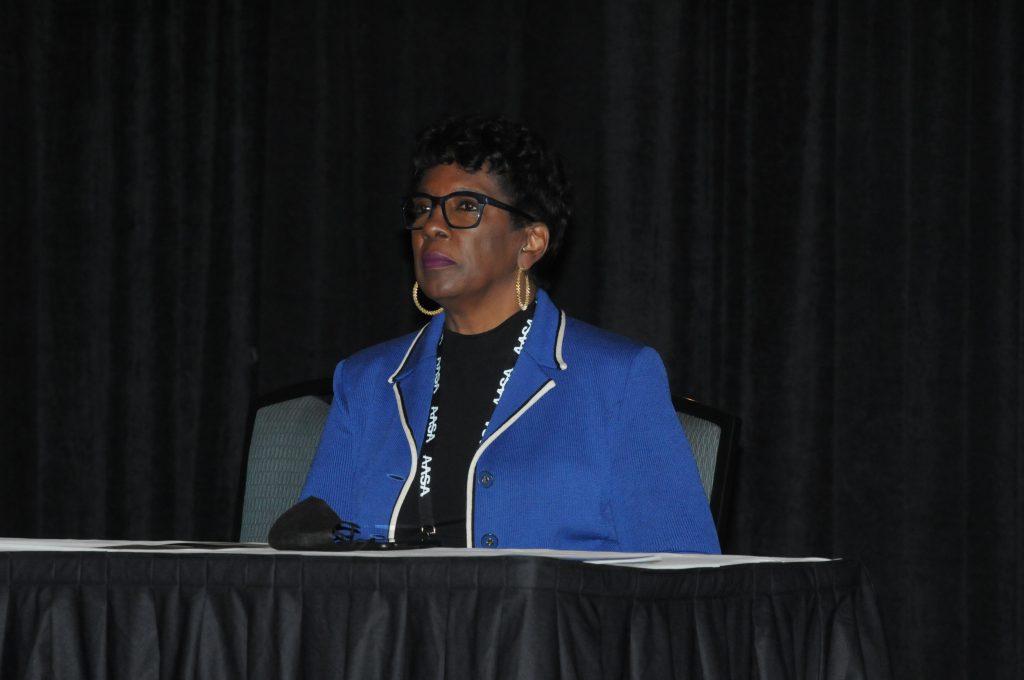“Some of the pathways in today’s high schools are preparing students for yesterday’s jobs.” That’s how M. Ann Levett, superintendent of Savannah-Chatham Schools, Ga., opened her presentation Friday at the AASA national conference in Nashville.
Joining her on the panel was Gene Bottoms, whose book Tomorrow’s High School: Creating Student Pathways for Both College and Career offers practical strategies relating to the topic of their session on building postsecondary options for students.
Bottoms is the founder of High Schools That Work and the former vice president of the South Regional Education Board. He shared key components of a successful transformation. These include rigorous and high-quality assignments; an overhaul of math and literacy instruction; shared leadership between classroom teachers, school counselors and administrators; and a new approach to vertical alignment between middle and high school.
Most interestingly, Bottoms sees a need for school leaders to rethink the structure of senior year in high school. “Senior year … should be a launchpad, not a rest stop,” he said. Ideally, he thinks, students should graduate with 30 hours of college credit.
David Schuler, superintendent of Township School District 214 in Illinois, agrees. In his district, all seniors are required to graduate with at least six college credits. “This way, they leave knowing they can do college,” he explained during the session. Additionally, his school system boasts 2,700 work-based learning locations for students.
Students participating in career development programming creates a great context for what they are learning. It’s something that Richard Culatta, CEO of the International Society for Technology in Education, sees as pivotal. He said: “Without something to connect the learning to, how do we invite students to engage in [high school] math?”
The panelists agreed there is a need to blur the lines between elementary, middle and high schools when it comes to career development. Savannah-Chatham Schools hosts an annual Kid Biz Fair that invites 8,000 upper elementary school students to learn about college and career pathways at the high school.
“Students find the field trip so engaging that we have trouble getting them back on the bus,” said Levett.
Culatta addresses digital literacy skills in creating future ready students. He invites superintendents to examine their own acceptable use policies when they return home. “Does it read as a list of don't’s or is it a list of opportunities to use technology to bring in new ideas and solve problems in your community?
Digital literacy for teachers, Culatta said, is another area to strengthen. He offered a framework for professional development through the standards provided by ISTE.
Levett encouraged other superintendents to have courage and consistency in asking community partners for technology needs. In her district's career and technical education programs, she finds it pivotal to have industry-standard equipment, technology and tools. And she isn’t afraid to ask.
All of these measures provide practical solutions to “make high schools a rich and rewarding experience for all students, whatever their future college and career goals may be,” Bottoms concluded.
(Kate Crowder is a reporter with Conference Daily Online and communications director in Germantown Municipal School District, Germantown, Tenn.)

